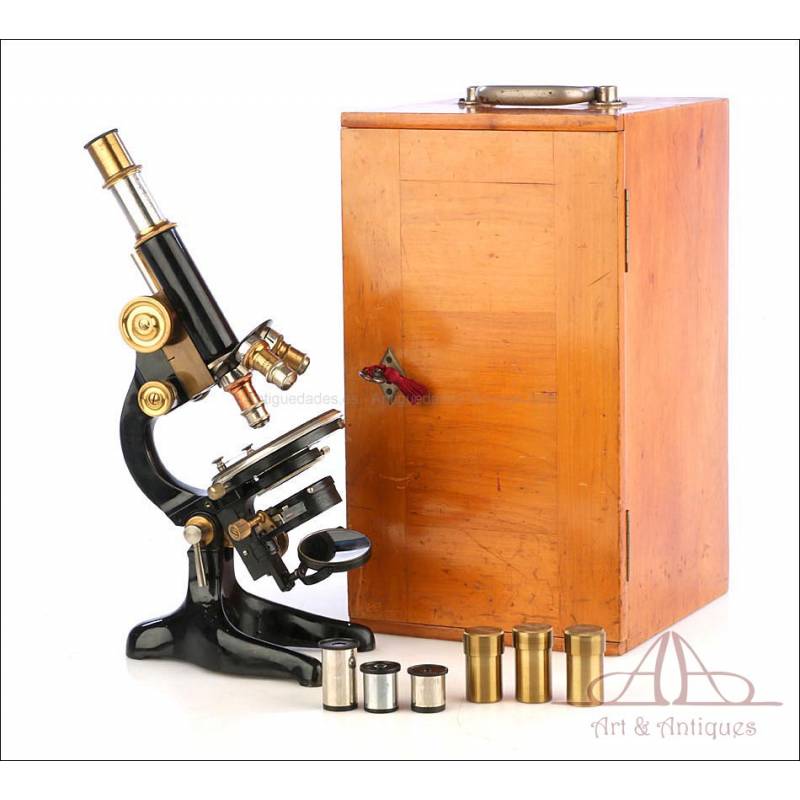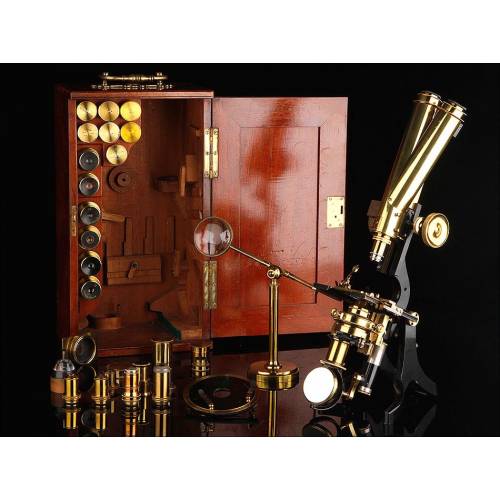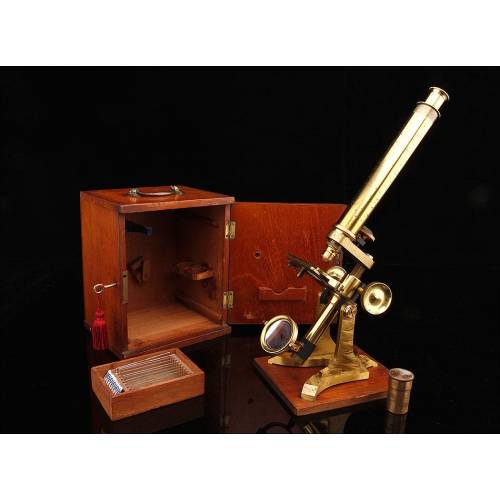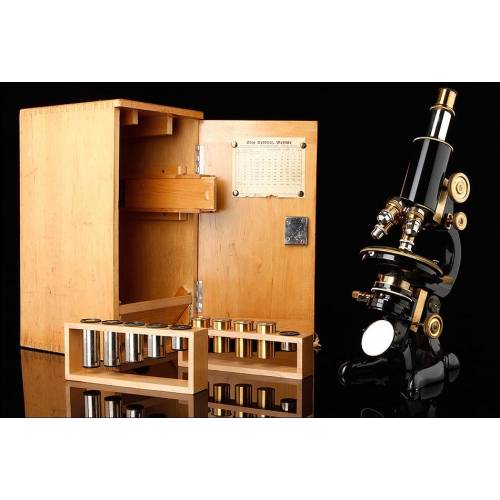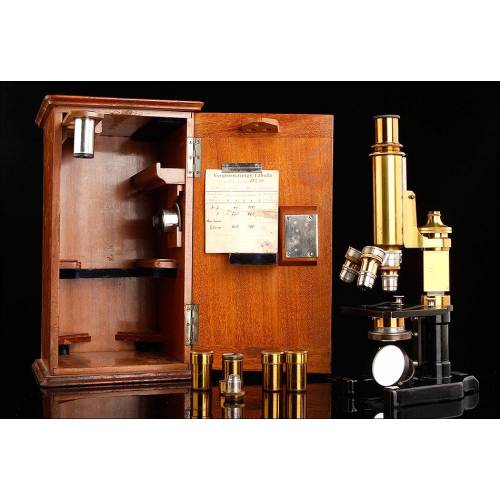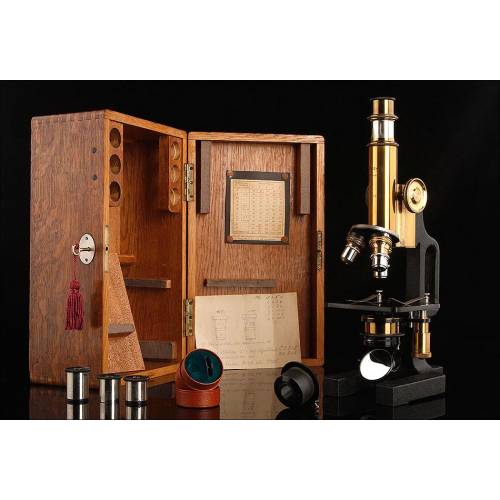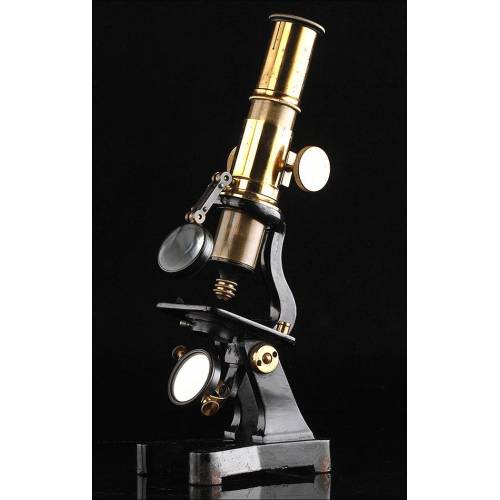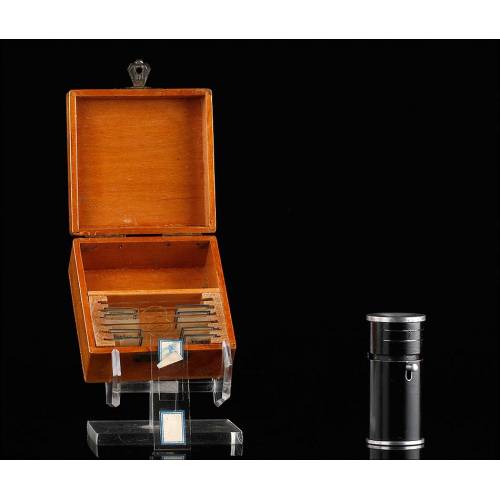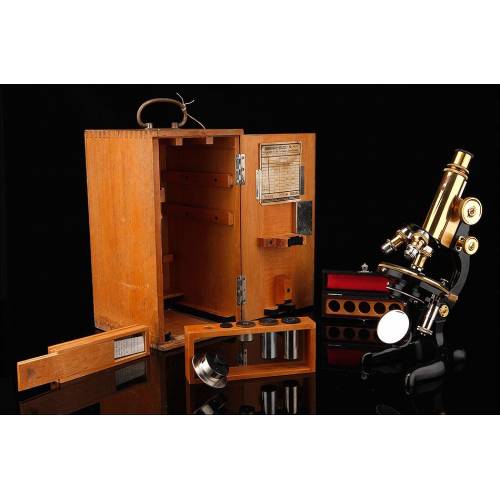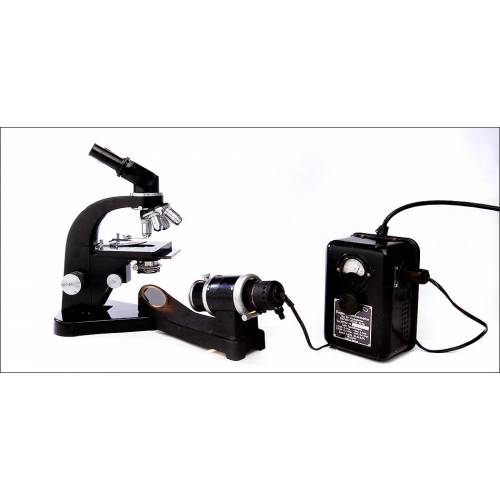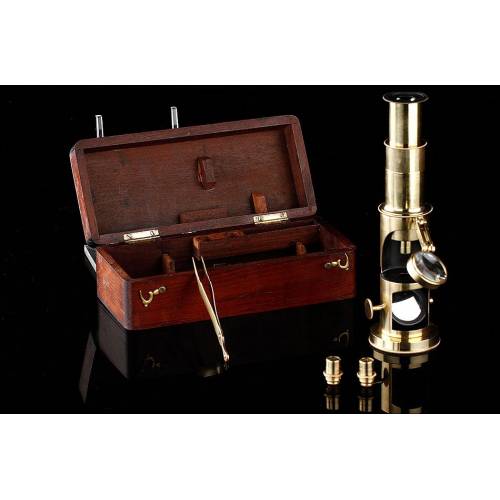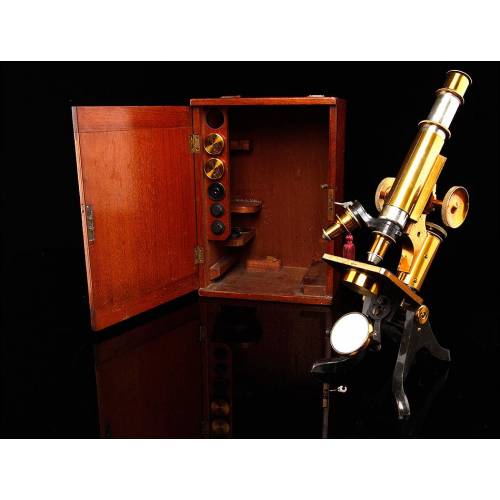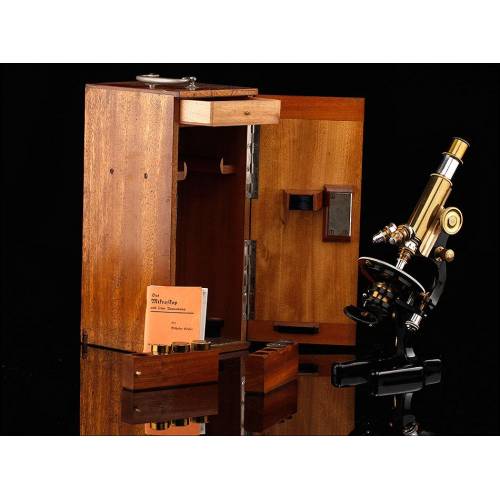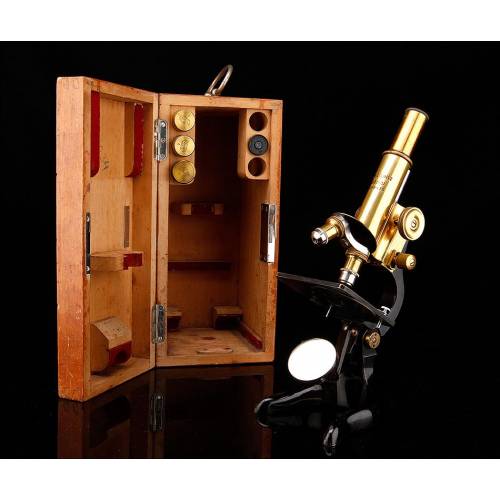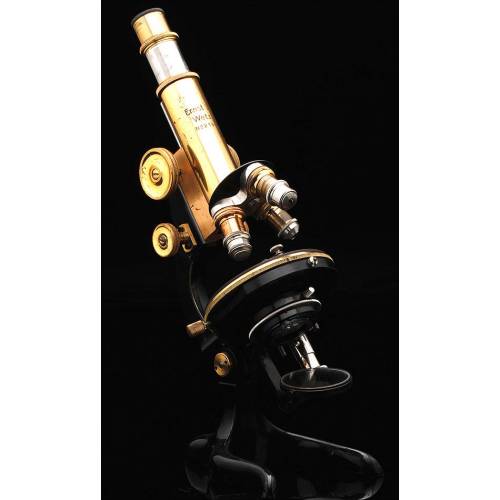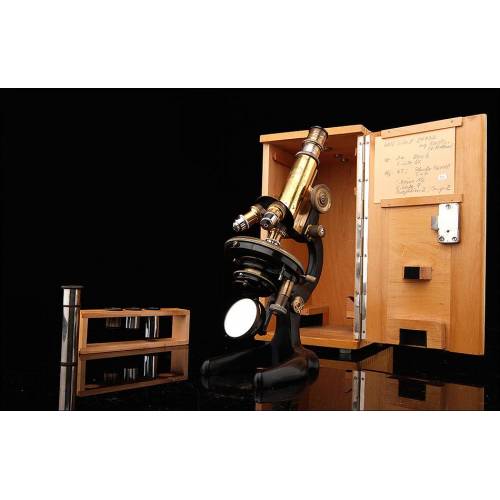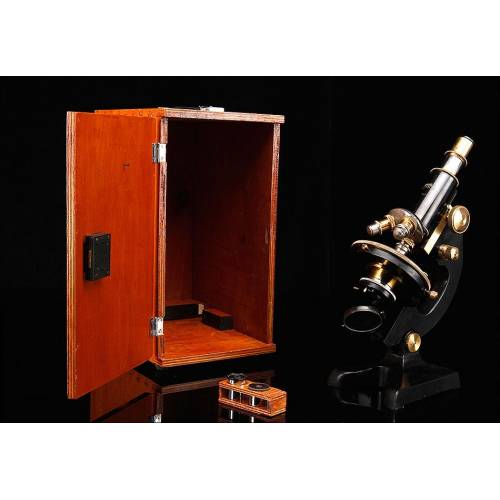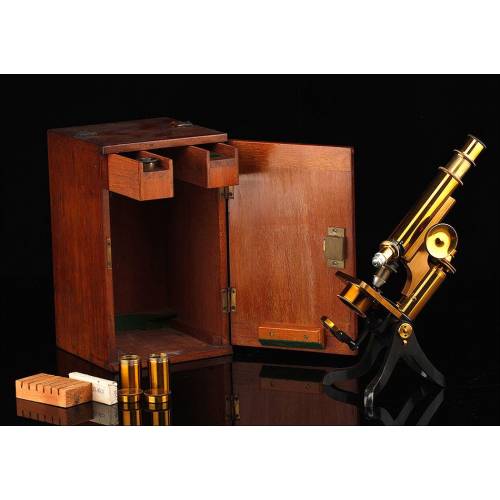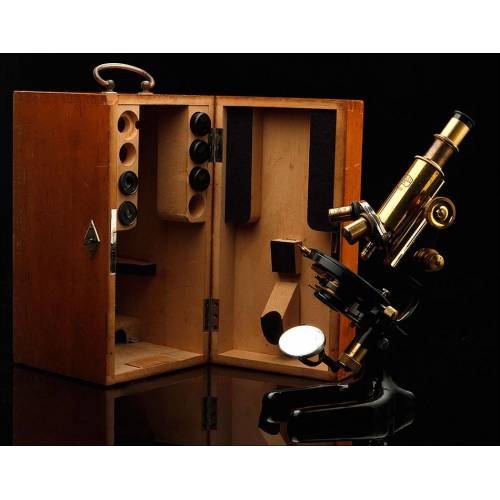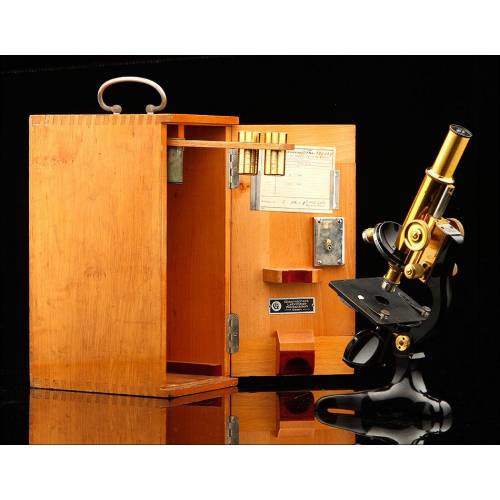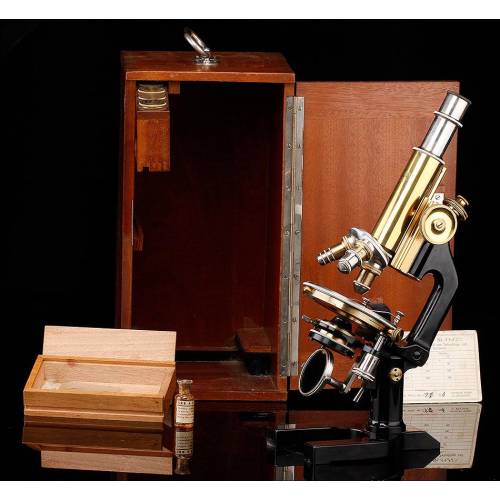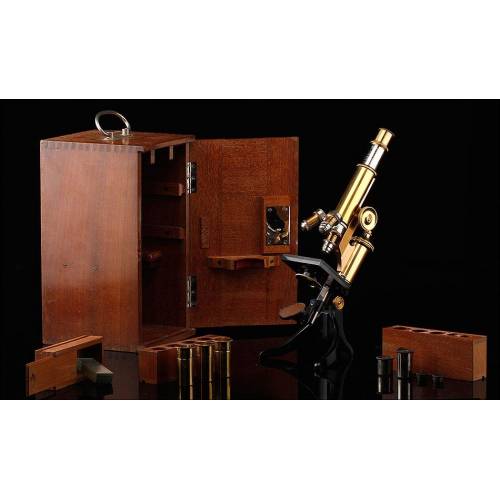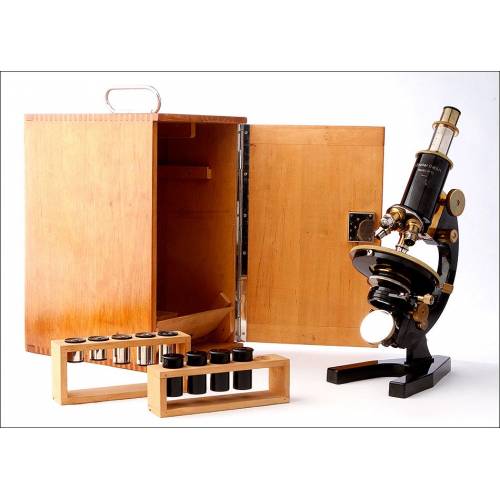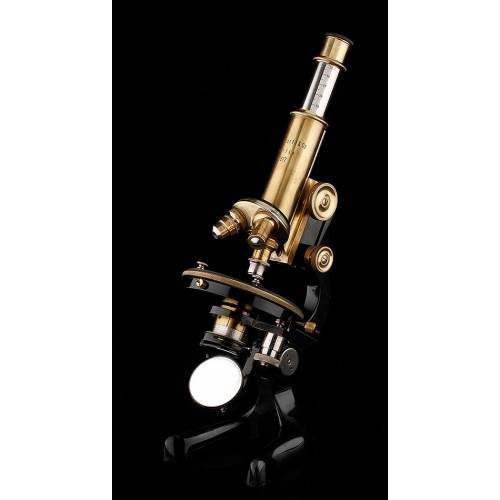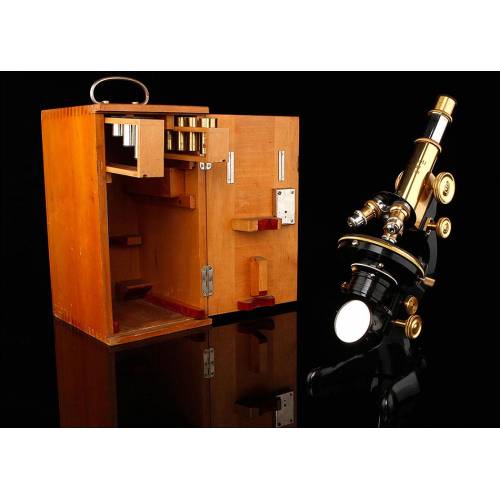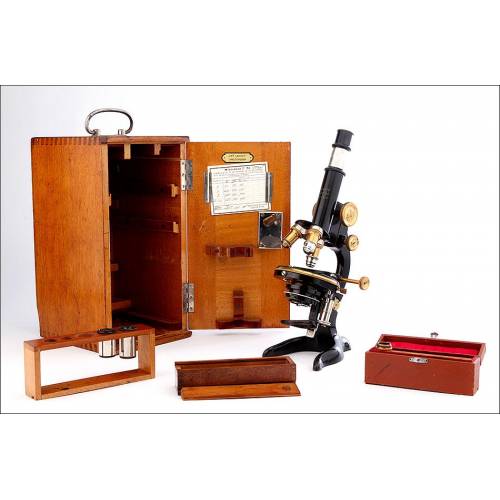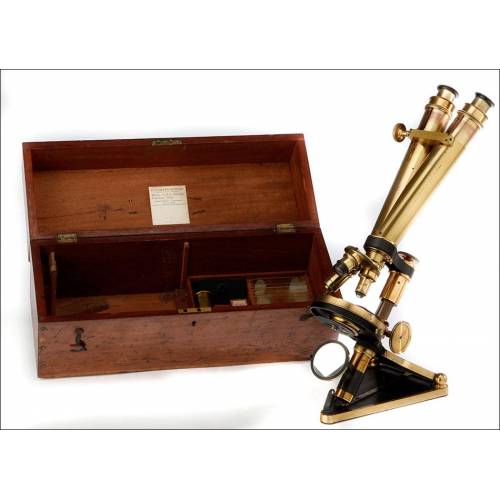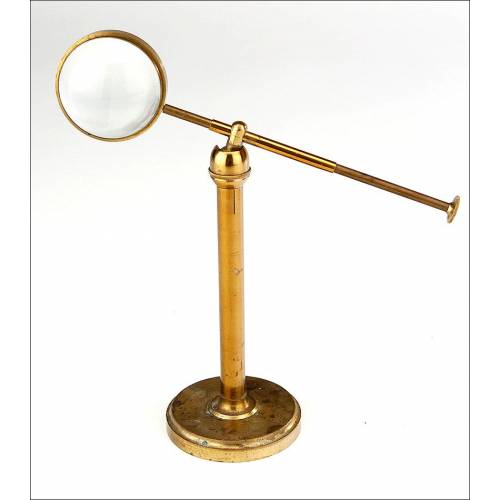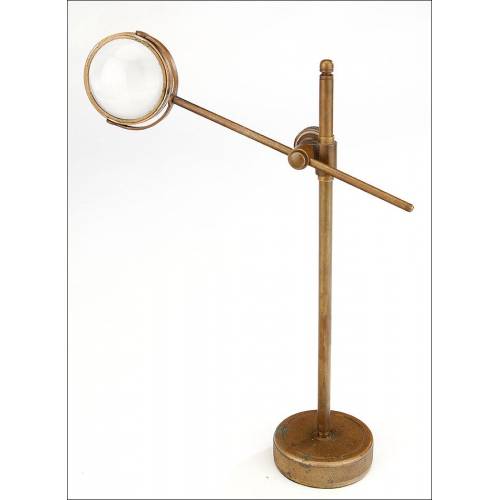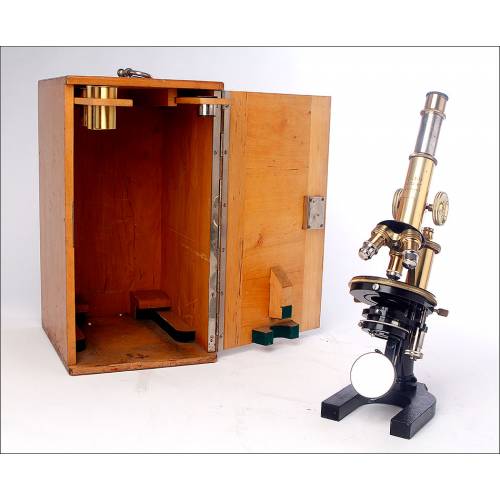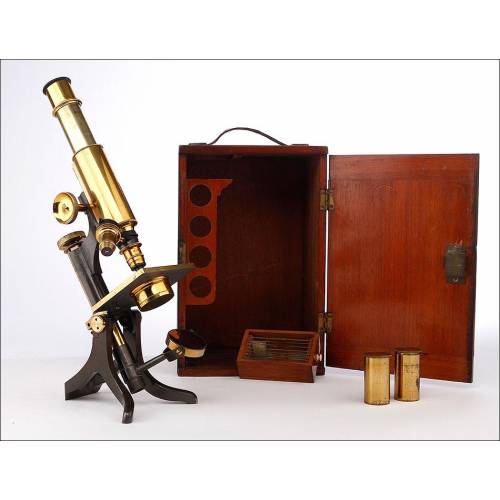D-844
Antique Kremp Wetzlar Monocular Microscope. Germany, 1927
Beautiful Krem Wetzlar microscope in excellent condition. Fully functional. With original case and set of accessories.
Sold!
Superb antique Krem Wetzlar monocular microscope, made in Germany in 1927 and in very good condition. This singular scientific instrument is in fine working order and comes in its original solid wooden case, also finely preserved and with functional lock and key set. The microscope has black-lacquered horseshoe foot and body; the black finish looks shiny and even, and makes a nice contrast with the brass and chrome-plated metal component parts. The brass parts preserve the original protecting finish which provides them with a warm antique patina. It also mounts a three-lens revolving nosepiece and maintains the original double-sided mirror, both in good condition. The rack-and-pinion system used to move the turret and focus the samples is well preserved and moves fluidly, just like the rest of the screws and mobile parts. At the back of the microscope we can see an engraved logo with the manufacturers name, Kremp Wetzlar, and the serial number 8072: this number matches the one in the storing case and the identification card. The case also contains an accessory set with four eyepieces and three lenses, these one in their brass sleeves with the name of the maker engraved in the lids. This exclusive and antique Kremp Wetzlar monocular microscope is a wonderful exhibition piece, but also a functional device almost one hundred years old. Dimensions: Width: 4.72 in / 12 cm. Height: 15 in / 38 cm. Depth: 6.89 in / 17.5 cm.Kremp Wetlzar History The gear and optic material company Kremp Wetzlar starts out in 1883, founded by Christian Kremp. Kremp had been trained as a carpenter and musical instrument maker, but was always interested in watch movements, mechanical systems and optics. In 1874 he owned a business of his own to build and repair musical instruments in Wetzlar, Germany. Some year later he moves to Hoffstat, where his friend Moritz Hensoldt asks him to help him solve a technical issue in one of his microscope. Kremp finds a solution and Hensoldt encourages him to follow this direction, so he starts manufacturing microscopes and optic components, together with mechanical parts for engineering companies. In 1913 Georg Kremp, son of Christian, takes over the business; between 1933 and 1945 they make armament, but after the end of World War II they resume production. The following decades bring a real economic boom for the business, but in the 1970s production starts to fall, as new competitors located in China and Japan enter the market. The operation of the optical branch shuts down in 1979, but currently the company is still active and manufactures precision mechanical component parts for leading companies in the field of engineering, optics and medical technology.

